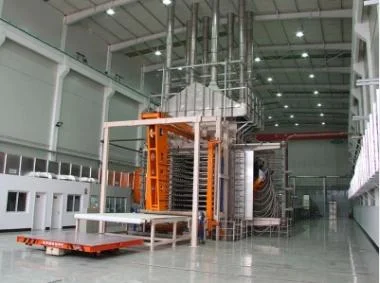Insulating cardboard, also known as thermal insulation cardboard, is a versatile material that has gained significant attention in recent years. With the increasing demand for energy efficiency and sustainability, the need for effective thermal insulation solutions has become paramount. In this article, we will explore the advantages of using hot press for insulating cardboard and its potential applications in various industries.
Understanding Insulating Cardboard
Insulating cardboard is a type of cardboard that is specifically designed to provide thermal insulation. It is composed of multiple layers of paperboard, often reinforced with other materials such as aluminum foil or plastic films. These layers are bonded together using adhesives, creating a structure that effectively traps air and reduces heat transfer.
Composition and Properties of Insulating Cardboard
Insulating cardboard is typically composed of three main layers: the outer layer, the core layer, and the inner layer. The outer layer is usually made of paperboard, providing strength and protection to the insulation material. The core layer contains the insulating material, which can be made of various materials such as recycled paper fibers, cellulose, or expanded polystyrene (EPS). The inner layer acts as a barrier, preventing moisture from penetrating the insulation.
The properties of insulating cardboard make it an excellent choice for thermal insulation. It has a low thermal conductivity, meaning it is a poor conductor of heat. This property allows it to effectively reduce heat transfer, keeping the desired temperature inside a space. Additionally, insulating cardboard is lightweight, easy to handle, and can be easily cut and shaped to fit different applications.
Importance of Thermal Insulation in Various Industries
Thermal insulation plays a crucial role in various industries, including packaging, construction, and transportation. Let's explore the importance of thermal insulation in each of these industries:
Packaging: Insulating cardboard is widely used in packaging to protect sensitive products from temperature fluctuations. It helps maintain the desired temperature inside the packaging, ensuring the quality and integrity of the products during transportation and storage. This is particularly important for perishable goods, pharmaceuticals, and electronics.
Construction: Thermal insulation is essential in buildings to reduce energy consumption and maintain a comfortable indoor environment. Insulating cardboard can be used in walls, roofs, and floors to prevent heat loss during winter and heat gain during summer. It helps improve energy efficiency, reduce heating and cooling costs, and create a more sustainable living or working environment.
Transportation: Insulating cardboard is also used in the transportation industry to protect goods that require temperature control. It is commonly used in the construction of refrigerated trucks, containers, and packaging for perishable goods. By providing thermal insulation, it ensures that the temperature-sensitive products remain fresh and intact during transportation.
Applications of Hot Press For Insulating Cardboard
Hot press technology has revolutionized the production of insulating cardboard, offering numerous advantages over traditional manufacturing methods. Let's explore some of the key applications of hot press for insulating cardboard:
Building Insulation: Hot press technology allows for the production of large panels of insulating cardboard that can be used in building construction. These panels can be easily installed in walls, roofs, and floors, providing effective thermal insulation. The hot press process ensures a uniform distribution of the insulating material, enhancing its performance and durability.
Packaging Solutions: Hot press technology enables the production of customized packaging solutions using insulating cardboard. These solutions can be tailored to specific product requirements, ensuring optimal protection and temperature control. Whether it is for food, pharmaceuticals, or electronics, hot press insulating cardboard packaging offers reliable thermal insulation and product integrity.
Automotive Industry: The automotive industry can benefit from hot press insulating cardboard for various applications. It can be used in the construction of car interiors, providing thermal insulation and soundproofing. Additionally, it can be used in the manufacturing of battery enclosures for electric vehicles, ensuring proper thermal management and safety.
Advantages of Hot Press for Insulating Cardboard
Hot press technology offers several advantages over traditional manufacturing methods for insulating cardboard. Let's explore some of these advantages:
Enhanced Insulation Performance: The hot press process ensures a uniform distribution of the insulating material, resulting in enhanced insulation performance. This leads to improved energy efficiency and reduced heat transfer, making hot press insulating cardboard an effective solution for thermal insulation.
Increased Durability: The hot press process creates a strong bond between the layers of insulating cardboard, resulting in increased durability. This makes it suitable for various applications, including those that require high mechanical strength and resistance to wear and tear.
Customization: Hot press technology allows for the customization of insulating cardboard to meet specific requirements. It can be tailored to different thicknesses, sizes, and shapes, making it suitable for a wide range of applications. This flexibility enables the use of hot press insulating cardboard in various industries and ensures optimal performance.
Cost-Effective: Hot press technology offers cost-effective production of insulating cardboard. The process is efficient and can be automated, reducing labor costs and increasing productivity. Additionally, the use of sustainable materials in the production of insulating cardboard contributes to overall cost savings and environmental benefits.
Conclusion
Hot press technology has revolutionized the production of insulating cardboard, offering enhanced insulation performance, increased durability, customization options, and cost-effectiveness. Its applications in various industries, including packaging, construction, and transportation, make it a versatile solution for thermal insulation. As the demand for energy efficiency and sustainability continues to grow, hot press insulating cardboard is poised to play a significant role in meeting these needs.






